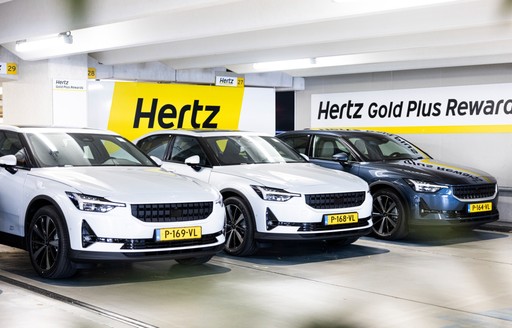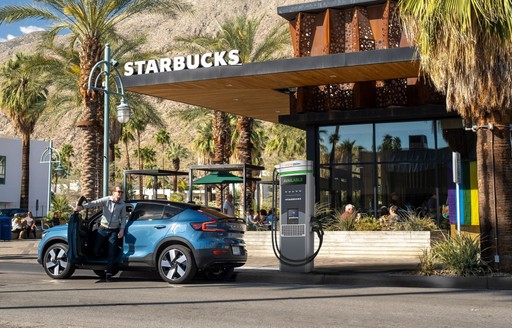Electric truck adoption is about to finally take off, and that means trucking fleet operators and those who serve them need to build strategies. Although some learnings can be taken from the electrification of passenger vehicles, e-trucks are a whole new challenge. Here’s what you need to know about truck electrification and the tools to support it.
E-trucks are scaling fast
Electric truck adoption is no longer a theoretical concept. In 2024, global electric truck sales grew by nearly 80%, reaching over 90,000 units. China led the way, accounting for more than 80% of those sales thanks to new scrappage schemes, falling battery prices, and tightening emissions regulations. In Europe, over 10,000 electric trucks were sold for the second year in a row, without major incentives.
The range of available models has exploded too, growing from fewer than 70 in 2020 to more than 400 today. And real deployments (from container drayage in California to long-haul trials in Germany) show that these vehicles are ready for the road.
There is one key question that keeps coming up for fleet operators planning this transition:
Where can my trucks actually charge?
Why it’s not just about infrastructure

Electric trucks are already on the road. Chargers are being deployed along major corridors. But there’s still a major operational blind spot: planning.
Most route planners, station maps, and energy tools are built for private passenger vehicles. They show you where to plug in, but not whether your truck can actually use that station, reach it on time, or integrate it into a logistics schedule.
And that creates real risk. If a truck arrives at a station it can’t access, or misses a planned charging stop, it’s not just an inconvenience; it’s a failed delivery, a scheduling domino effect, and a negative impact on total cost of ownership (TCO).
What makes trucks different
Planning electric truck routes isn’t just about battery size or distance. It’s about operating constraints, and most current tools ignore them.
Trucks can’t just pull into any station. Many locations are physically inaccessible due to size, layout, or turning radius. Others are technically compatible, but practically unusable within tight delivery windows or legally mandated rest breaks.
In the EU, a 45-minute rest period can add up to 150 km of range using a 350 kW charger - and up to 400 km with megawatt charging. However, this is only if the station is truck-accessible, available, and fits within the planned route.
Trucks also rely on predictable, fixed routes, not ad hoc journeys. That means routing needs to account for both depot charging and public infrastructure, often in a specific order or schedule. And if public chargers are unavailable, too slow, or not designed for truck access, the whole plan falls apart.
The business case is getting stronger

The economics of electric trucking are steadily improving. In China, the TCO of electric trucks is already lower than diesel in some applications. In Europe and the US, TCO parity is expected by 2030, and likely sooner for high-utilization fleets.
Charging costs in the EU are already around 30% lower than diesel. And infrastructure cost per kWh can drop by 80% if charger utilization increases from 5% to 30%.
However, such utilization and the TCO savings it enables only occur when you can plan routes and charging stops reliably. Without proper tools, fleets risk unplanned downtime, overpaying for charging, and lower ROI on both trucks and chargers.
What fleet operators need
To support electric trucks at scale, planning tools need to go beyond basic mapping. They need to reflect the operational complexity of freight.
At a minimum, fleets need:
A way to filter for truck-accessible chargers
Routing that considers rest breaks and charging time
The ability to combine depot and public charging in a single route
Support for reserved charging to avoid queuing and delays
Flexible routing logic that adapts to the use case: whether that’s long-haul, last-mile, or industrial
These aren’t premium features. They’re the baseline for electrifying heavy-duty operations.
How Chargetrip is helping e-trucking

At Chargetrip, we’re expanding our routing engine to meet the needs of e-trucking.
Today, we support:
Truck-accessible station filters, already live in Chargetrip GO
Multi-stop routing across depot and public infrastructure (currently only for vans)
Custom routing logic to match your operational model
You can already explore truck accessible chargers for free with the truck-accessible filter in Chargetrip GO. This is also available to integrate into your own software products via the Chargetrip API.
And we’re just getting started. Coming soon, we’ll roll out full truck routing support, powered by energy consumption models for available e-trucks in Chargetrip’s route planning to account for load, terrain, and access. Planning tools shouldn’t just show you where chargers are. They should tell you which ones trucks can actually use.
We’re not repurposing car tools for freight.
We’re building planning infrastructure that reflects how trucks actually operate.
Want to be the first to know when it’s live?
Sign up for a Chargetrip account to get product updates in our release newsletter
Ready to integrate truck-accessible filters now?
Get in touch to add them via API or tile service today.





























